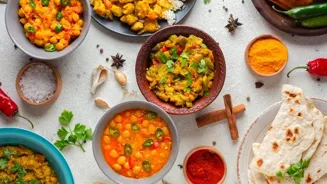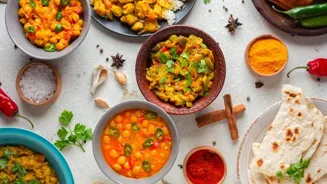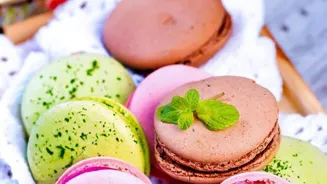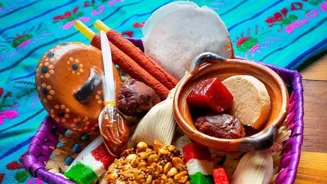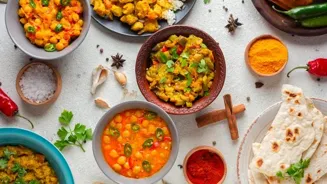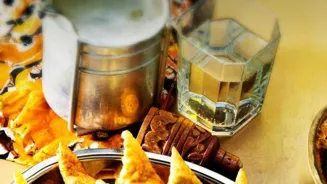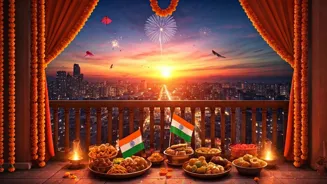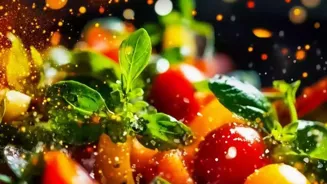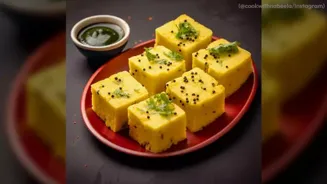Delve into the world of Indian desserts, from Gulab Jamun to Kheer. Explore the rich flavors and cultural significance
India, a land of vibrant colors, diverse cultures, and of course, incredibly delicious
food! While we all know and love our spicy curries and flavorful biryanis, let's take a sweet detour to explore the amazing world of Indian desserts.
From the melt-in-your-mouth gulab jamun to the creamy kheer, Indian sweets are a delightful reflection of the country's rich culinary heritage. Each region boasts its own unique specialties, using local ingredients and traditional techniques passed down through generations.
So, get ready to embark on a sugary journey through India!
Gulab Jamun: India's beloved dessert with khoya, cardamom, and rose syrup variations
Gulab Jamun, arguably one of India's most beloved desserts, holds a special place in every sweet lover's heart. These soft, spongy milk balls, deep-fried to a golden brown and soaked in a fragrant rose-flavored syrup, are simply irresistible.
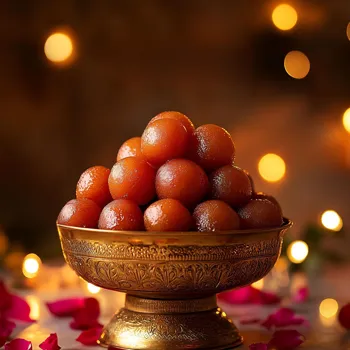
The magic lies in the perfect blend of khoya (reduced milk solids), a touch of flour, and aromatic spices like cardamom, creating a texture that is both smooth and satisfying.
Whether enjoyed warm or cold, gulab jamun is a guaranteed crowd-pleaser, gracing celebrations, festivals, and even casual sweet cravings. You'll find countless variations across India, from the dark, almost caramelized kalajamun to the smaller, bite-sized versions perfect for a quick indulgence.
Indian kheer: a versatile dessert with creamy rice pudding
Kheer, also known as payasam in South India, is another quintessential Indian dessert, cherished for its comforting simplicity and creamy texture. This rice pudding, slow-cooked in milk with sugar and flavored with cardamom, nuts, and raisins, is a staple in many Indian households.
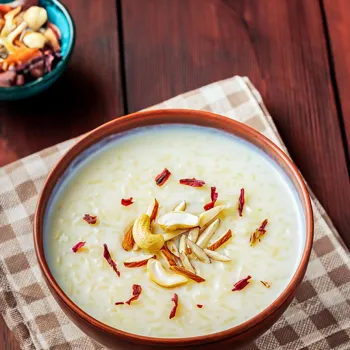
The beauty of kheer lies in its versatility. While the classic version uses rice, you can find variations made with vermicelli (seviyan), tapioca (sabudana), or even lentils (dal). Each ingredient lends its own unique character to the dish, creating a symphony of flavors and textures.
From the rich and decadent kheer served during festive occasions to the lighter, everyday versions, this humble dessert offers a taste of pure bliss.
Barfi: a beloved Indian sweet with various flavors, symbolizing luck and prosperity
Barfi, a dense, milk-based sweet, is a staple in Indian mithai shops, known for its melt-in-your-mouth texture and rich flavor. The name "barfi" comes from the Persian word "barf," meaning snow, which perfectly describes the dessert’s smooth and delicate consistency.
There are countless varieties of barfi, each distinguished by its key ingredient. Besan barfi, made with gram flour, is known for its nutty flavor, while kaju barfi, made with cashew nuts, is a luxurious treat, often decorated with edible silver leaf.
Coconut barfi, pista barfi, and chocolate barfi are also popular choices, catering to diverse palates. Barfi is often gifted during festivals and celebrations, symbolizing good luck and prosperity.
Jalebi: Crispy, syrupy Indian street food, loved with saffron-cardamom syrup
Jalebi, a crispy and syrupy sweet, is a popular street food and festive treat across India.
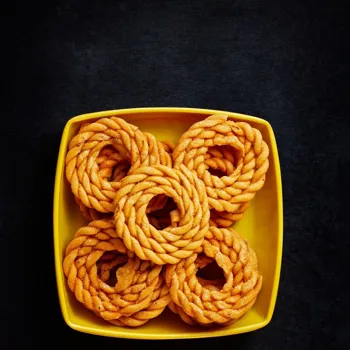
These pretzels, made from a fermented batter of maida (all-purpose flour) and besan (gram flour), are deep-fried in swirling shapes until golden and crispy, then soaked in a fragrant sugar syrup infused with saffron and cardamom.
The contrast between the crisp exterior and the syrupy interior is what makes jalebi so addictive. Often enjoyed hot, jalebi is a perfect accompaniment to rabri (a thickened milk dessert), ice cream, or even a savory breakfast like poha or fafda.
Its vibrant orange color and unique shape make it a visually appealing treat as well.
Rasgulla: Bengali sweet made from cheese, chhena, and semolina in sugar syrup
Rasgulla, a spongy, cheese-based sweet, is a Bengali specialty that has won hearts all over India. These soft, white balls, made from chhena (Indian cottage cheese) and semolina, are cooked in a light sugar syrup until they become plump and juicy.
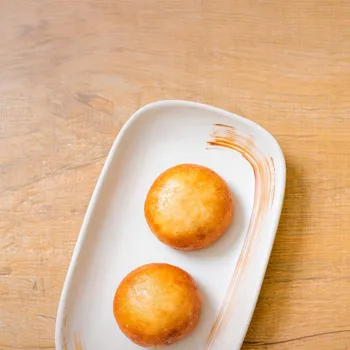
The secret to a perfect rasgulla lies in the quality of the chhena and the precision of the cooking process. A well-made rasgulla should be incredibly soft, almost melting in your mouth, and bursting with sweet syrup.
While the classic white rasgulla is the most common, you can also find variations like the kesar rasgulla (flavored with saffron) and the rajbhog (a larger version filled with dry fruits).
Laddu, a versatile Indian sweet for celebrations with various flavors
Laddu, a spherical sweet, is perhaps the most ubiquitous Indian dessert, gracing every celebration, festival, and auspicious occasion.
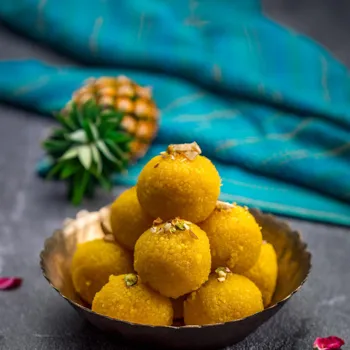
Made from a variety of ingredients like besan (gram flour), motichoor (tiny gram flour pearls), boondi (small fried droplets), or even dry fruits and nuts, laddu comes in countless flavors and textures.
The ingredients are bound together with sugar syrup or jaggery, forming a compact and delicious ball. Motichoor laddu, with its tiny, jewel-like droplets, is a perennial favorite, while besan laddu, with its nutty flavor and crumbly texture, is another popular choice.
Laddu is considered an auspicious sweet, often offered to deities and distributed among family and friends as a symbol of good fortune.
AI Generated Content. Glance/InMobi shall have no liability for the content